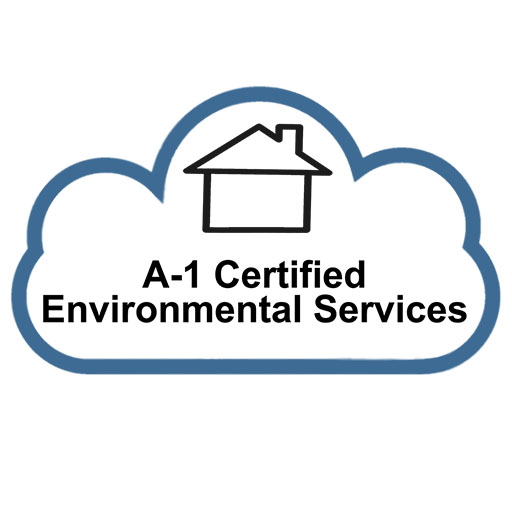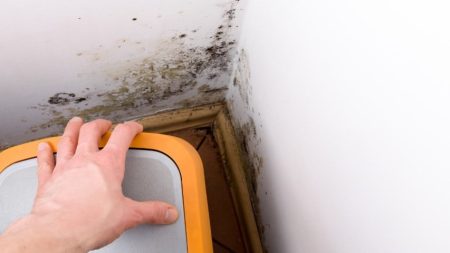Certified Mold Testing in the San Francisco and Los Angeles Regions
Call to set an appointment: 888-217-2719
Thinking about mold testing? You're not the only one, but you probably have a lot of questions. You'll wonder whether or not you really need testing, how to choose the right company, and how mold testing can benefit you. The truth is that mold spores are everywhere. They've been around since long before humans have existed. They're usually not a problem on their own, but once those spores contact moisture, mold will start to grow. Since mold can have some serious health consequences, it's always best to know your home's or building's mold status.
Certified Mold Testing and Mold Inspection
We provide Certified Mold Testing services in the San Francisco and Los Angeles regions as well as covering most other areas in California including San Jose, Long Beach, Oakland and Sacramento.
Still have questions? Then keep reading, and feel free to Contact Us at any time.
We're happy to help you out with your Mold Testing needs, but keep in mind, we also undertake Indoor Air Quality Testing and VOC Testing in the California region.
Indoor and outdoor mold growth is a type of fungus, commonly found both indoors and outdoors, growing on food, airborne particles, surfaces and within moist and humid environments like bathrooms, kitchens, or basements.
Mold can pose numerous health concerns, such as respiratory ailments and shortness of breath. Mold irritates airways, leading to coughing, wheezing and shortness of breath in susceptible individuals.
Allergic Reactions: Mold can trigger allergic reactions in some people, including symptoms like sneezing, runny nose, itchy eyes and hives.
Neurological Issues: Exposure to mold has been linked with neurological disorders including headaches, memory problems and difficulty focusing.
Eye Problems: Mold exposure may cause eye infections like conjunctivitis (pink eye) and eye irritation, while it also poses skin concerns like rashes, itching and eczema.
If you are experiencing any of these health conditions, it is essential that you visit a doctor for diagnosis and treatment.
How to Protect Yourself from Mold
There are various strategies available to you for protecting against mold growth such as:
- Keep your home clean and dry: This can help prevent mold growth. Ventilate regularly - doing this will remove moisture from the air. Finally, repair any leaks or water damage in your home to further decrease mold growth.
- Use a dehumidifier: This can help lower humidity levels in your home. Cleaning any signs of mold growth immediately can stop it from spreading to more places in the home and help protect the inhabitants.
If there is mold present in your home, it is crucial that it is professionally removed by an experienced team in order to safeguard both health and to avoid further damages to the property. This will reduce further potential issues in future.
For more on Black Mold Testing in the Los Angeles area.
Importance of Mold Testing in Homes and Buildings
Mold testing is the practice of detecting and quantifying mold infestation within homes or commercial buildings, providing valuable data that helps identify and address mold problems as well as safeguard the building occupants' health and wellbeing.
Mold testing is necessary for several reasons. First, mold can pose health hazards to people in terms of respiratory issues, allergies and neurological damage. Second, mold damage can wreak havoc on building materials and furnishings as well as reduce property value significantly. Thirdly, by acting quickly to address mold concerns, early identification and response will protect both your health and financial investment. Mold testing is an invaluable way to identify and address mold issues before they cause health complications or property damage.
When should You Get Mold Testing Done
Mold testing should be undertaken for various reasons in your home or building. Common indicators might include visible mold growth, health concerns that you believe might be linked to mold exposure, water leakage/floods and flooding as well as having recently purchased property or homes.
You plan to remodel or renovate your home or building and require mold testing for renovation projects.
How to Perform Mold Testing
Testing mold requires professional expertise. There are various testing methods, each offering its own benefits and drawbacks; most commonly employed are:
Surface sampling - this technique involves collecting samples of mold growth from surfaces like walls, floors, and ceilings.
Air sampling - incorporating air samples as an additional form of collection.
Bulk sampling - This method involves taking samples of mold growth in bulk materials like insulation, drywall and carpet for analysis.
The optimal method for mold testing will depend on each specific circumstance. If visible mold growth is evident, surface sampling may suffice, while air or bulk sampling may be more suitable options for testing mold growth.
Find out more about our Commercial Mold Testing in the Los Angeles conurbation.
For additional information, contact us at: 888-217-2719

What to Expect After Mold Testing
After mold testing has been completed, its results will be interpreted by an experienced professional and will indicate if mold exists, its type, and its level of infestation.
Once mold has been discovered, the next step should be developing a plan to address its presence. This may involve extracting and cleaning up affected areas as well as taking steps to prevent future growth of mold.
Mold testing may seem complex and time consuming, but it's vital in protecting your health, property, and financial investment. By selecting an experienced mold testing service provider and following their recommendations, you can ensure your mold problem is effectively dealt with. A-1 Certified Environmental Services has been providing certified mold testing for over 10 years in both the San Francisco and Los Angeles regions.
Find out more about Mold Prevention Tips in the San Francisco Bay Area
For additional information, contact us at: 888-217-2719
Mold Assessment in California
Mold can be an increasingly serious threat in homes and buildings in regions impacted by climate change, where flooding and frequent forest fires are increasing common. Under California law, landlords are legally required to notify tenants if mold exceeds permissible exposure limits or poses an imminent health threat.
The Importance of Proper Mold Assessment
Proper mold inspection is crucial in recognizing and remediating mold issues. Unfortunately, without national standards around this subject matter, standards vary from state to state leaving consumers without much experience dealing with water intrusion, at a disadvantage.
Consumers in California should view mold testers and remediators as architects responsible for designing the scope and steps of remediation project; remediators serve as contractors that carry out these efforts. When choosing either service, testing should not be skimped upon as testing determines remediation efforts - inadequate testing could result in inadequate remediation efforts. It’s also of great importance to chose independent, 3rd party mold testing specialists – this will ensure that the results are completely unbiased.
Proper mold assessment and remediation in California is key to identifying and treating mold issues effectively. Consumers should make sure that they hire an accredited or certified mold inspector to conduct a complete assessment and advice on the final remediation of their home or building.
We also perform Mold Testing in the Sacramento area.
| Type of Mold | Type of Environment | Symptoms of Exposure | Treatment Options |
|---|---|---|---|
| Aspergillus | Damp, humid environments | Respiratory problems, allergic reactions, neurological problems, eye problems, skin problems | Antifungal medications, immunotherapy, environmental controls |
| Penicillium | Damp, humid environments | Respiratory problems, allergic reactions, eye problems, skin problems | Antifungal medications, immunotherapy, environmental controls |
| Cladosporium | Damp, humid environments | Respiratory problems, allergic reactions, eye problems, skin problems | Antifungal medications, immunotherapy, environmental controls |
| Stachybotrys | Water-damaged buildings | Respiratory problems, allergic reactions, neurological problems, eye problems, skin problems | Antifungal medications, immunotherapy, environmental controls |
| Chaetomium | Water-damaged buildings | Respiratory problems, allergic reactions, neurological problems, eye problems, skin problems | Antifungal medications, immunotherapy, environmental controls |
This table is just a sample, and it is not intended to be a comprehensive list of all the different types of mold and their symptoms. If you are concerned about mold in your home, it is important to see a doctor or a qualified mold remediation professional.
Different Types and Their Effectiveness for Mold Testing
There are various methods for mold testing, each offering advantages and disadvantages. Some of the more widely-used approaches include:
Surface Sampling - Surface sampling involves taking samples of mold growth from surfaces like walls, floors and ceilings for testing purposes. It's one of the easiest forms of testing mold as it does not require much equipment or special training. However, surface sampling only detects mold growing on visible surfaces - not those hidden away behind walls or in insulation.
Air sampling - Air sampling involves collecting samples of airborne mold spores for analysis. Air sampling can detect mold that is growing in the air but not on surfaces, therefor it’s more expensive than surface sampling and may not even be necessary if visible mold growth exists on surfaces.
Bulk sampling - This approach involves gathering samples of mold from bulk materials like insulation, drywall and carpet for analysis. Although costly, bulk sampling offers the highest degree of accuracy when testing for hidden mold growth.
The best method for mold testing will depend on each situation. If visible mold growth is present, surface sampling may be enough; otherwise, air or bulk sampling may be required.
View our new Mold Clearance Testing page.
Mold testing should not be treated as an exact science; there's always the risk that some mold could go undetected even by an experienced professional conducting the tests. If mold growth is an issue in your home or building, take steps to prevent further growth and get tested regularly to keep yourself safe from further mold occurrence.
How to Interpret Mold Test Results and Take Appropriate Action
Once mold testing is completed, its results will be assessed by an experienced professional to determine its presence, type, and extent of mold growth.
Once mold has been detected, the next step should be devising a plan to address its presence. This may involve extracting mold and cleaning affected areas before taking steps to prevent future outbreaks of growth.

Mold Testing and Indoor Air Quality Testing in San Francisco and Los Angeles
How to Clean Mold
It should be noted that A-1 Certified Environmental Services does not undertake any form of remediation. We only specialize testing for mold, indoor air quality, VOC testing as well are numerous other air quality tests.
However, mold removal can be accomplished either professionally or by the homeowner themselves, depending on its size and location. Small patches of mold growth may be manageable with DIY efforts; for larger or more challenging patches it may be wiser to hire professional help. When cleaning up an affected area it is also essential that all agents used be fully disinfected properly in order to eliminate further infestation. When cleaning any affected areas, it’s also essential that all agents involved be disinfected fully afterwards for best results. Ultimately it may require professional cleaners with proper certifications before they can take effect successfully and disinfect any affected areas properly afterwards.
| Method of Mold Testing | Type of Sample Taken | Accuracy of Test |
|---|---|---|
| Surface Sampling | Samples of mold growth from surfaces | Fairly accurate |
| Air Sampling | Samples of airborne mold spores | More accurate than surface sampling |
| Bulk Sampling | Samples of bulk materials, such as insulation, drywall, and carpet | Most accurate method of mold testing |
Cleaning Up the Affected Area
Once mold has been successfully eliminated, it's essential to disinfect the area thoroughly to help stop future growth of mold.
How Can Mold Growth Be Prevented
Once mold has been eradicated and cleaned up, it is vital that preventative steps be taken against its future growth. You can di this by undertaking the following actions.
- Maintaining a clean and safe home environment
- Ventilate regularly
- Repair leaks or water damage immediately
- Use a dehumidifier
Clean any mold growth immediately. If mold has found its way into your home, it is crucial that it is removed by a certified professional as soon as possible in order to protect both health and property from further damage.
See our other page about Mold Testing in the San Francisco area.
For additional information, contact us at: 888-217-2719
You can also email us directly from the main Contact Us page.

VOC Testing San Francisco
Avoid Mold Growth: Tips for Maintaining a Healthier Indoor Environment
Mold is a type of fungus that thrives indoors and outdoors. It is frequently found on food, in the air, on surfaces and can even reside in moist and humid environments such as bathrooms, kitchens or basements. Mold may lead to respiratory ailments; allergic reactions; neurological issues; eye issues and skin infections as well as skin cancers. In both environments it may cause respiratory illnesses; allergic reactions are caused by breathing in mold particles. It can also form in moist environments like bathrooms or kitchens - when there is too much moisture, infestation of this fungi occurs.
In terms of health effects caused by mold it has numerous health implications:
- Respiratory issues with regards to breathing in dust
- Allergic reactions
- Neurological issues
- Eye problems and skin cancerous issues
- Skin issues
If you are experiencing any of these health conditions, it is essential to see a doctor for an accurate diagnosis and treatment. Meanwhile, there are various measures you can take to prevent mold growth in your home, including the following.
- Keeping the space clean and dry - doing this will help minimize potential mold outbreaks in your home.
- Regularly ventilate your home which will help dispel excess moisture from the air.
- Repair any leaks or water damage in your home to stop mold growth.
- Finally, using a dehumidifier can also reduce humidity in your home and keep mold at bay.
Clean any mold growth immediately: Doing this will help stop further spread of the mold in your home and protect both you and your property from further damage. As always, professional removal services should be called in immediately in order to rid yourself of mold growth in order to protect both health and property from further deterioration.
Here are a few additional strategies for combatting mold growth:
- Stay cool during summer and warm in winter by air-conditioning/heating your home accordingly - this will keep the humidity at an appropriate level and reduce mold growth in your home.
- Install exhaust fans in both your kitchen and bathroom to quickly clear away moisture after cooking or bathing, as this will help eliminate humidity from the air.
- When watering plants, be wary not to overwater as this may create excess moisture in the soil that fosters mold growth.
- Clean and dry up spills immediately to help avoid mold growth on wet surfaces.
- Check regularly for signs of mold growth; if any is discovered, act quickly to eliminate it from the home environment.
By following these tips, you can prevent mold growth in your home and ensure the health of you and your family.
Frequently Asked Questions About Mold Testing
What are the signs you're sick from mold?
Symptoms of mold exposure vary depending on each individual - mild reactions could include runny nose or itchy eyes while more serious conditions could include respiratory problems, headaches or fatigue. If any of these are present for you it's essential that you consult a healthcare provider in order to get a proper diagnosis and treatment plan in place.
More FAQ's
What is the most accurate way of testing for mold?
For an accurate mold testing result, samples of mold growth from around your home should be taken which will be sent off for a laboratory analysis. This will help to pinpoint both the type and extent of the problem.
How can you test whether mold is making you sick?
Unfortunately, there is no single answer to this question. The best way to determine if mold exposure has caused symptoms in any individual person would be by consulting with a physician and having tests conducted to ascertain if mold is indeed the cause of your issues.
Do air purifiers help with mold?
Air purifiers may help remove mold spores from the air, but they cannot cure mold infestation. If mold has taken hold in your home, professional removal should be sought immediately.
How quickly does mold exposure make someone sick?
The exact time required for an individual to become ill from exposure varies widely depending on the individual case - some individuals may show symptoms immediately while others could take days or even weeks before getting ill from exposure.
What symptoms does mold toxicity produce?
Mold toxicity symptoms vary from person to person. Some may experience minor reactions like runny nose or itchy eyes while others could experience more severe effects like respiratory problems, headaches or fatigue. If any of these symptoms arise, it’s vital that you see a physician immediately so they can provide a proper diagnosis and provide treatment plans.
How can you tell if your home is toxic?
Unfortunately, there is no fool-proof answer for this question. The best way to determine whether or not a house is toxic is to visit a physician and have them perform tests to see if mold exposure has triggered symptoms in you or not.
What does black mold smell like?
Black mold often emits an earthy scent; it may also have sweet, sour or even rancid notes depending on where it has grown in your home. If any such odors exist within your property it is important to investigate further as you may have a potential mold presence.
How can you determine if mold is present in my walls?
There are various indicators that mold could be present, including visible mold growth or water damage on walls. If you suspect mold infestation, it's wise to have an expert examine the area for any signs.
How can you test for mold in your home?
There are various methods of testing mold in your home. A visual inspection, air sampling or collecting samples of visible growth may all be effective ways of testing for mold growth in your home. You should contact a qualified professional when finding visible mold if concerned about its presence; air sampling can also be conducted to check airborne mold spore levels; finally mold samples may also be collected by a professional in order to get accurate readings. If there is any cause for concern, a professional mold inspection should always be sought out immediately.

Mold Testing Los Angeles and San Francisco
Mold is a type of fungus that thrives on organic materials that contain moisture, such as wood. This differs from mildew which usually forms on surfaces like bathroom tiles. Mold growth can become a nuisance in homes and buildings alike and may pose structural issues and health hazards that necessitate remediation measures.
Mold reproduces through tiny airborne spores that drift freely and come into contact with organic materials and damp surfaces. If you suspect you have a mold issue, it is advisable to hire an independent mold specialist who will conduct an inspection, collecting samples of indoor air to be sent off for lab analysis.
If the results indicate elevated mold levels in your home, a specialist will be able to pinpoint exactly where they are found. Mold can pose serious health threats when living in environments conducive to its growth. Some mold species produce mycotoxins which have the potential to produce health risks if conditions allow their development.
Mold testing is essential to the identification and remediation of mold issues in homes and commercial buildings. If you suspect a problem, it's essential to contact a certified inspector to conduct a full investigation.
| Resource | Description |
|---|---|
| The Asthma and Allergy Foundation of America | Provides information about mold and asthma, as well as resources for finding a qualified mold remediation professional. |
| The Environmental Protection Agency | Provides information about mold, including how to prevent it, how to clean it up, and how to protect your health. |
| The Centers for Disease Control and Prevention | Provides information about mold, including the health risks associated with mold exposure and how to prevent mold growth. |
Please keep in mind, we also provide certified mold testing services in the San Francisco and Los Angeles regions as well as covering most other areas in California including San Jose, Long Beach, Oakland and Sacramento.
You can keep your home or building clean and healthy for everyone who uses it. It all starts with getting the place tested. The sooner you know your mold status, the sooner you can breathe easy...
For additional information, contact us at: 888-217-2719
You can also email us directly from the main Contact Us page.
Sources
https://www.cdc.gov/mold/dampness_facts.htm
https://www.epa.gov/mold/mold-testing-or-sampling
https://iaq.zendesk.com/hc/en-us/articles/212104577-What-about-mold-in-large-buildings-
